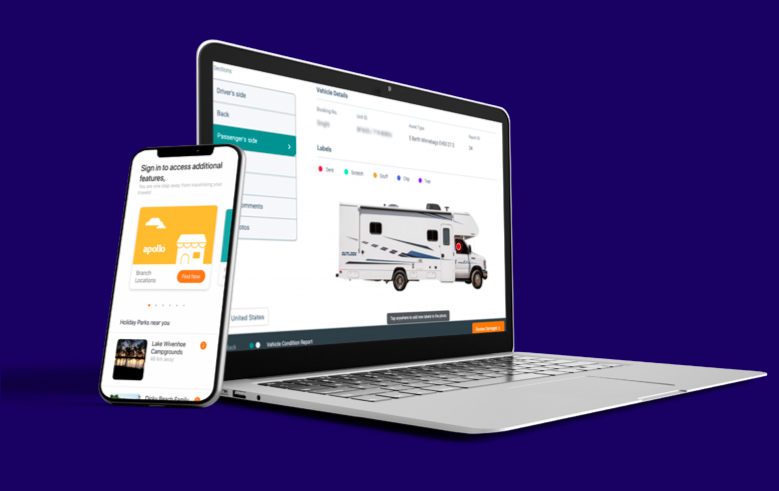So, you have an incredible idea for an app. It’s your pet project or idea and you’re passionate about it. But you’ve never done it before! Where do you go, what should you do, and where should you start?
Before you launch into marketing or developing your app, workshopping your idea and determining product-market fit as a starting point is a must.
Why? Product-market fit can be the difference between failure and success. The primary reasons apps fail, aside from poor process execution, is due to poor research, marketing competition and a lack of customer research.
But don’t let this caution deter you from innovation and bringing your digital vision to life. The ideation phase can be one of the most rewarding and exciting parts of your software development journey!
What is product-market fit?
Product-market fit occurs when your product suits strong market demand. It’s when your unique value proposition, customer needs, and distribution align. In essence, it’s when your product directly satisfies customers’ needs in a way other products do not.
Why does product-market fit matter?
The biggest problem companies face is thinking they’ve achieved product-market fit when they haven’t put the work in. Product-market fit is the foundation for any successful venture to win early adopters, gather feedback and gauge interest. It’s the best way to confirm people are willing to engage with or pay for your product, before your team invests time and energy on growth or upselling initiatives. (In fact, these can be counterproductive if your product doesn’t have enough market reach to generate profit.)
The two primary ways to determine product-market fit
Determining product-market fit means deciding the type of business you want to be. Do you want to invest hundreds of thousands of dollars on market research, focus groups and user assessments to “test” and shape your app and determine how far it aligns with the market? Or, would you prefer to invest your time and money investigating, testing and growing your idea so you can rapidly innovate?
If you have money and time to burn, the first option could be perfectly viable. However, many people are guided by a false fear that marketing testing, research and investigation is the only way to make progress. But this can be counterintuitive to rapid innovation.
If rapid innovation is your goal, the latter option is ideal. Creating a minimum viable product (MVP) and testing your idea is a worthwhile investment to reach your goals sooner. This involves engaging developers to test your idea conceptually or literally.
This enables you to learn, obtain experience and work with developers and stakeholders while growing and managing your product. As you develop your app, you are already in the process of challenging your thought processes, using rapid innovation, and scoping, sizing and testing within a group. As you commence sketching and building workflows, you’ll be able to quickly assess what works and what doesn’t in real time.
Does creating a minimum viable product (MVP) to test product-market fit and achieve rapid innovation sooner sound like a path you’d like to explore? If so, read on.
While there’s no perfect order of events, here are some tips for workshopping your app idea and determining product-market fit based on the hundreds of Discovery Workshops we’ve completed with innovators just like you.
1. Act when your energy is high
It’s essential to act when your energy is high and when it’s most relevant and important to you. This is different for everybody!
In some instances, people have ideas and launch into the Discovery phase without fleshing out a product plan at all. More often, though, people invest mountains of time, energy, effort, research, assumptions and emotion into their idea from the get-go before the discovery phase. Then, when it comes to workshopping their idea and determining product-market fit, they discover all this initial investment was misdirected.
There’s a sweet spot on this spectrum between under and overbaking your idea. While there’ll never be a “perfect” time, act when your energy and passion is high.
2. Involve the right people – including developers!
You may feel tentative to workshop your idea with others, feeling pressure to over-research and over-prepare, particularly before meeting with a development team. It’s completely normal and understandable to want to get all your ducks in a row before investing in your idea through workshopping.
But the risk here is you miss out on key thought processes and firing up momentum.
Ideation is most successful when you’re surrounded by the right team. Don’t feel pressured to wait until you’re ready to build to involve developers! Get them involved early – even if you’re an expert in your field and not software development.
(For example, some NetEngine clients choose to participate in multiple Discovery Workshops, months before they’re ready to build!)
This will give you access to critical expertise to inform your thought processes and key moments of decision-making.
3. Workshop your idea
When identifying product-market fit for your app – participate in a workshop. Workshops should be done well and as often as you require. They should be rigorous, inclusive and collaborative.
As we’ve shared before, there is no such thing as the perfect time. (In doubt? You probably need to do a workshop!)
Workshops are a valuable opportunity for you to identify the problem you’re solving and the need you’re satisfying.
While there are no hard and fast rules when it comes to structuring your workshop, here’s some key takeaways based on the hundreds of successful workshops we’ve completed with digital innovators, ranging from those with technical backgrounds to those without.
NetEngine Discovery Workshops take a collaborative, inclusive and team-based approach, giving people access to a diverse range of expertise – including a project lead, UI/UX developer, front-end developer and back-end developer.
Workshop attendees bring their expertise and our developers and facilitators bring theirs. Everyone is on the same “team” to share and collaborate, making a conscious effort to view objectives from the same lens, while still collaborating and sharing diverse perspectives.
Note, if you workshop your ideas with developers, developers will not assess your product-market fit. However, without speaking with developers first, when it comes time to assess your product-market fit in a business strategy consultation, you’ll only have half the knowledge you need.
Developers load up your knowledge base, giving you information and understanding about the personality and potential of your app. This gives you a better base from which to determine product-market fit.
4. Develop your Minimum Viable Product
After workshopping your idea, it’s time to build and develop to reach your MVP. Every project and person has different goals and requirements, so there’s no cookie-cutter approach to what outcomes you’ll achieve after a workshop.
Your developers may deliver:
- mockups and prototypes
- customer and user personas
- user journey maps
- user flow
- information architecture
- journey mapping, scope, estimates
- workflows and wireframes.
All these elements get you closer to your MVP to reach your rapid innovation goals sooner.
5. Test and validate your MVP
After developing your MVP, you can use it as your business case and proof of concept, sharing it with initial test users and investors! Your MVP helps you understand whether your app is right for your target market. You can use it to share your brand with users and demonstrate how your app is unique compared to others.
Review and test it thoroughly. Collect users’ reactions and harness their feedback to determine the acceptability and competitiveness of your product in market.
Final thoughts
For all the rapid innovators, developing and testing your MVP to validate your product-market fit is a great way to ensure speed to market and that your dollars are invested well. Use it to solve the right problems, target, segment, test and develop your business case. Don’t be afraid to connect with developers only – as they’ll be able to contribute important expertise and key thought processes. They can also help you fire up momentum. Remember, there’s no such thing as the “perfect time” to start.
Looking to bring your digital vision to life, fast? Connect with local, approachable developers at NetEngine to start workshopping your idea today.



